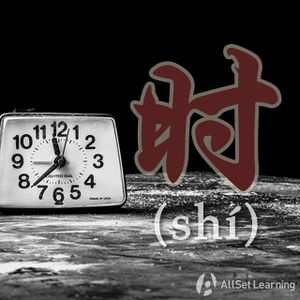Difference between revisions of "Expressing "when" with "shi""
m |
|||
| Line 16: | Line 16: | ||
== Examples == | == Examples == | ||
| − | There are two great examples of this pattern in the poem [http://baike.baidu.com/subview/872285/11247655.htm 远和近 by 顾城] (note that the translation is not always literal): | + | There are two great examples of this pattern in the poem [http://baike.baidu.com/subview/872285/11247655.htm 远和近 by 顾城] (note that the provided translation is not always literal): |
<div class="liju"> | <div class="liju"> | ||
Revision as of 03:26, 24 June 2015
-
Level
-
Similar to
-
Used for
-
Keywords
| This article is a stub. Editors can help the Chinese Grammar Wiki by expanding it. |
By now you should now how to express "when" using "的时候" (de shíhou). But there's also a slightly shorter, more formal way to do it: simply use 时 (shí) all by itself. (No 的!)
Structure
(Subject) + Verb / Adj. + 时……
As time words can appear before or after the subject, you can also place the Time + 时 (shí) after the subject.
Examples
There are two great examples of this pattern in the poem 远和近 by 顾城 (note that the provided translation is not always literal):
- 你,You,
- 一会 看 我 ,look at me one moment,
- 一会 看 云 。and at the clouds the next.
- 我 觉得 ,I feel,
- 你 看 我 时 很 远 ,when you're looking at me, you're far away,
- 你 看 云 时 很 近 。but when you’re looking at the clouds, how could we be nearer!
See also
Sources and further reading
Books
- Basic Patterns of Chinese Grammar (pp. 24-5) →buy
- Integrated Chinese: Level 1, Part 2 (3rd ed) (pp. 293-4) →buy



